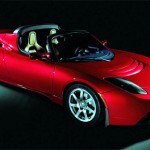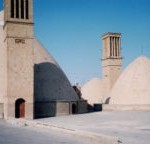 There’s some question if the recent discovery of lithium in Afghanistan is so recent. The New York Times recently reported, “The United States has discovered nearly $1 trillion in untapped mineral deposits in Afghanistan, far beyond any previously known reserves and enough to fundamentally alter the Afghan economy and perhaps the Afghan war itself, according to senior American government officials.
There’s some question if the recent discovery of lithium in Afghanistan is so recent. The New York Times recently reported, “The United States has discovered nearly $1 trillion in untapped mineral deposits in Afghanistan, far beyond any previously known reserves and enough to fundamentally alter the Afghan economy and perhaps the Afghan war itself, according to senior American government officials.
The previously unknown deposits — including huge veins of iron, copper, cobalt, gold and critical industrial metals like lithium — are so big and include so many minerals that are essential to modern industry that Afghanistan could eventually be transformed into one of the most important mining centers in the world, the United States officials believe.
An internal Pentagon memo, for example, states that Afghanistan could become the “Saudi Arabia of lithium,” a key raw material in the manufacture of batteries for laptops and BlackBerrys.”
 Lithium is also a key component used in rechargeable batteries of electric vehicles. Is that why we’re really there?
Lithium is also a key component used in rechargeable batteries of electric vehicles. Is that why we’re really there?
As the hole BP stabbed 23,000 feet into the ocean continues to pollute the region: the reality that we need safe renewable sources of energy such as solar, wind and wave is back on the forefront. The technological ideas that once seemed way out exist now. Think of it… Apple ‘s new Iphone IS a video phone that was once the stuff of cartoon character such as Dick Tracy and The Jetsons’.
Nearly 90 % of the oil used in the US is for car transportation. Electric vehicles and high speed transportation are not just cool they are critical to the economic and environmental survival of America. It’s time for a new national energy plan.
__________________________
Dirty Energy Independence Week July 1 – July 7th, 2010
Dirty Energy Independence Week July 1 – July 7th, 2010
President Obama gave an address about the BP oil spill in the Gulf of
Mexico — and what it teaches us about America’s economic and ecological future.
President Obama has heard and joined our call for bold, decisive action to clean up
the spill and build a safe, clean-energy future for the Gulf region and for America.
Now, we must help him and Congress turn his words into the change we need.
In his address, the president called the BP oil spill “the worst environmental
disaster America has ever faced.” He vowed to hold BP accountable for the terrible
damage it has caused. And he promised to remove the threat of future spills by
ending America’s dependence on oil and building a strong clean-energy sector that
can power our economy.
This July, Green For All IS ASKING YOU TO TAKE ACTION: SIGN UP AT:
Dirty Energy Independence Week of Action:
____________________
The windcatcher
One of the most common uses of the malqaf (windcatcher) is as an architectural feature to cool the inside of the dwelling, and is often used in combination with courtyards and domes as an overall ventilation / heat management strategy. The malqaf is essentially a tall, capped tower with one face open at the top. This open side faces the prevailing wind, thus ‘catching’ it, and bringing it down the tower into the heart of the building to maintain air flow, thus cooling the interior of the building. This is the most direct way of drawing air into the building, but importantly it does not necessarily cool the air, but relies on a rate of air flow to provide a cooling effect. This use of the malqaf or windcatcher has been employed in this manner for thousands of years, as detailed by contemporary Egyptian architect Hassan Fathy.
A windcatcher and qanat used for cooling.
The second usage is in combination with a qanat, or underground canal. In this method however, the open side of the tower faces away from the direction of the prevailing wind. (This can be adjusted by having directional ports at the top). By closing all but the one facing away from the incoming wind, air is drawn upwards using the Coandă effect, similar to how opening the one facing towards the wind would pull air down into the shaft.
As there is now a pressure differential on one side of the building, air is drawn down into the passage on the other side. This hot air is brought down into the qanat tunnel, and is cooled by the combination of coming into contact with the cold earth (as it is several meters below ground, the earth stays continuously cool) as well as the cold water running through the qanat. The air is therefore cooled significantly, and is then drawn up through the windcatcher by the same Coandă effect. This therefore brings cool air up through the building, cooling the structure overall, with the additionally benefit that the water vapour from the qanat has an added cooling effect.
Finally, in a windless environment or waterless house, a windcatcher functions as a solar chimney. It creates a pressure gradient which allows less dense hot air to travel upwards and escape out the top. This is also compounded significantly by the day-night cycle mentioned above, trapping cool air below. The temperature in such an environment cannot drop below the nightly low temperature. These last two functions have gained some ground in Western architecture, and there are several commercial products using the name windcatcher. When coupled with thick adobe that exhibits high heat transmission resistance qualities, the windcatcher is able to chill lower level spaces in mosques and houses (e.g. shabestan) in the middle of the day to frigid temperatures.
So effective has been the windcatcher in Persian architecture that it has been routinely used as a refrigerating device (yakhchal) for ages. Many traditional water reservoirs (ab anbars) are built with windcatchers that are capable of storing water at near freezing temperatures for months in summer. The evaporative cooling effect is strongest in the driest climates, such as on the Iranian plateau, hence the ubiquitous use of these devices in drier areas such as Yazd, Kashan, Nain, and Bam. This is especially visible in ab anbars that use windcatchers.
A small windcatcher (badgir) is called a “shish-khan” in traditional Persian architecture. Shish-khans can still be seen on top of ab anbars in Qazvin, and other northern cities in Iran. These seem to be more designed as a pure ventilating device, as opposed to temperature regulators as are their larger cousins in the central deserts of Iran.
TERI FLYNN HUB SOMA ARCHITECT
See Video
Listen to N The Mix Interview: Here
________________
Senator Bernie Sanders
_____________________
Visit these sections below
SUBSCRIBE TO UPDATES HERE
EVENTS –
INSIGHT –
N THE MIX - webcasts
 TV
TV
VIDEO -
SUBSCRIBE TO UPDATES HERE


